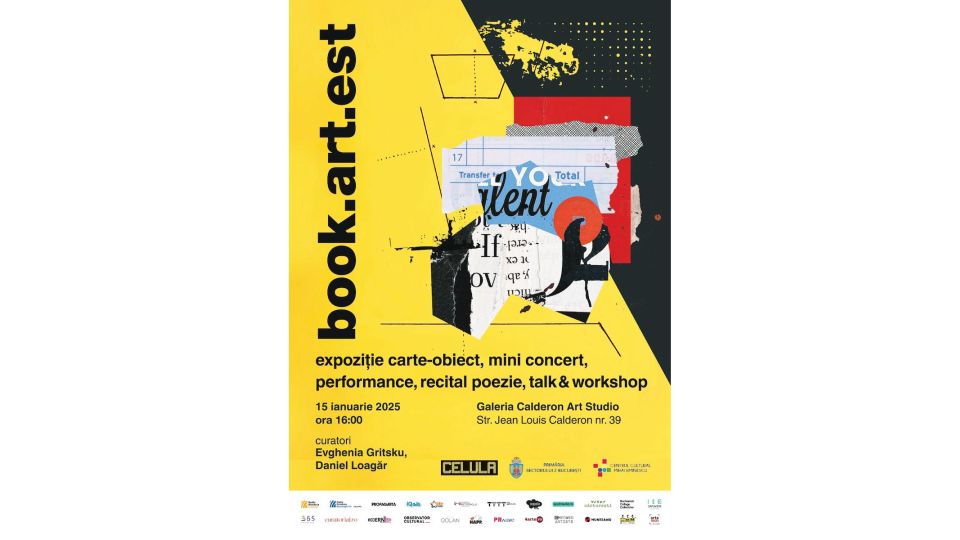Saviana Stănescu, ‘For a barbarian woman’
A new volume of theater plays signed by Saviana Stănescu, For a barbarian woman, recently appeared at the Tracus Arte publishing house

Corina Sabău, 18.09.2023, 18:10
A new volume of theater plays signed by Saviana Stănescu, “For a barbarian woman”, recently appeared at the Tracus Arte publishing house and was launched at the Cărturești Verona bookstore in Bucharest. At the launch of the volume – translated from English, with an introductory study by Diana Benea – the director of the National Museum of Romanian Literature, Ioan Cristescu, theater critic Oana Cristea Grigorescu and director Andrei Măjeri took the floor. Actress Adelaida Zamfira (who played in Saviana Stănescus first show, “Did you know that trains tell stories with children?”) read some monologues from the book.
“In the last twenty years, Saviana Stănescu has become an emblematic figure of American dramaturgy, an exponent of the intersection between East and West, between different cultures and theatrical traditions, between Eastern European absurdity and carnivalesque, and American psychological realism. If the authors entire activity can be contained in the metaphor of the bridges she generously builds between continents, cultures, languages and artists from various spaces, then the current edition hopes to strengthen such a bridge towards the Romanian public, through a selection of recent plays, edited and published mainly in the last decade.”
This is what Diana Benea writes in the introductory study of the volume “For a barbarian woman”. Saviana Stănescu won the UNITER award for the Best Play of the Year in 2000. Her first plays in Romanian (Infanta. Means of Use; Countdown) were staged by directors Radu Afrim, Theo Herghelegiu, Anca Maria Colțeanu, and Tudor Țepeneag. On the occasion of the launch in Romania of her new volume of theater plays, Saviana Stănescu spoke about the pendulum between the two spaces, the Romanian and the American, and about the transition from a literature marked by Eastern European realities to a global writing.
“These bridges between the two cultures, this In-betweenness, this experience between two worlds, between two continents, between two languages, and between many other Betweens have left a mark on me lately. Therefore, the way I write tries to capture this swing between identities, cultures and continents. I joke there in America, saying that I have been an American writer for 22 years, because I came to America in 2001 and started from scratch. Thats when I started writing in English. So, in a way, Im only 22 years old as an American writer goes. Sure, I have many more years as a Romanian writer and playwright, but it was important for me to reinvent myself, to start from scratch. As said here at the launch event, I have a curiosity that is kept alive, every day I am interested to see what is happening in the world. Maybe it comes from my journalistic background, maybe it comes from the fact that Ive always liked to explore different subjects. I have always been interested in various fields, from mathematics to literature, from information technology to dance. And for me, all of this is found in the way I try to write theater. I am a curious person by nature, it seems important for me to capture these realities of the day in a play. I think its important to create a dramatic situation, to create a story.”
If in her early days, when she wrote plays in Romanian, Saviana Stănescu was mainly interested in the area of the absurd, but since she arrived in the USA, her texts have acquired a wide socio-political resonance. Saviana Stanescu.
“When I arrived in the United States, I encountered a reality of the emigrant. It was hard for me. It was hard for me to start from scratch, it was hard for me to be different, to see that I am not recognized, that I am not considered on the same level as the writers there. So I started again from scratch, I tried to show what I can do, I tried to learn from others. Somehow, this new reality I encountered made me understand that in Romania I was spoiled. In Romania, I allowed myself to explore the zone of the absurd, to escape into various worlds. In America I ran into financial difficulties, I had to face a tougher world, especially in New York. As I said, I started from scratch. I became a student, although in Romania I was a recognized writer. There is something powerful about starting all over again. As Diana Benea writes in the preface of the volume For a Barbarian Woman, we also went through some important socio-political moments. And in America, another theme was added to my writing: power relations between countries. Because I realized that it is a different power ratio, we cannot compare the perception of the USA with the perception of Romania. And I realized that I am in another world, a world of power, a world of economic domination, a world with problems of racial and gender discrimination, a world with different economic problems than those in Romania. I had to adapt, I had to get into a different kind of rhythm. Naturally, these new realities appeared in my plays. Being an empath, if I live in a place for a while, I will write a play that reflects the problems of that place and the environment there, hoping that my text will also speak on a larger level, resonate globally.”
Currently, Saviana Stănescu is a university professor of dramatic writing and contemporary theater at Ithaca College, after teaching for 8 years at the New York University Tisch School of the Arts.






























